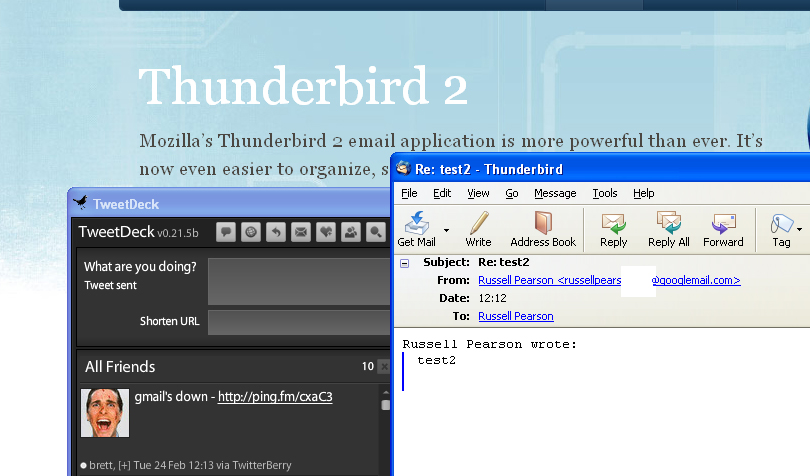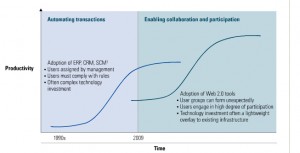 When I used to lecture, I used to find that the areas I at least thought I knew the most about could often be the most difficult to create a good half hour on. This little essay proves the point and I thought it would be an easy follow-on from what so far, has been my most responded to post.
When I used to lecture, I used to find that the areas I at least thought I knew the most about could often be the most difficult to create a good half hour on. This little essay proves the point and I thought it would be an easy follow-on from what so far, has been my most responded to post.
It takes up where my recent missive on what we should call social media inside the intranet left off. There were several comments from fellow Twitterers and by Lee Hopkins at his Talking Internal Communication Blog. Lee extended the discussion by pointing out that where internal communications sits inside the corporation, as who actually ‘owns’ it is an old chestnut and one not yet settled. With this in mind, I’d like to set a new old chestnut roasting, by looking at some of the issues someone dealing with social media uptake and usage inside the corporation has to deal with.
I’ve deliberately left this open by not adding the qualifier of inside the firewall. The reason for this is that like internal communications’ relationship with marketing, PR, corporate communications and HR; internal social media upsets the equilibrium with even more gusto. Social media is a disrupter of established norms and practices and it does this due to a variety of factors.
It’s when we start to look at this in more detail at these disrupters that we can begin to understand the impact of social media in the corporation, an impact that starts to look like the making of a paradigm shift, a business transformation.
First thing we need to note is the simple fact that the major driver for most corporation’s social media practices is marketing, they’re externally focused. Of the case studies I’ve been compiling, something like 95% have an external focus. Social media for these companies is about marketing, brand awareness and sales. This was why when Jeremiah K. Owyang at Forrester looked at ‘How To Staff For Social Computing’ he envisaged a team skilled in marketing led by a Social Computing Strategist and reporting to them a Community Manager.
Now what’s interesting here is that although Jeremiah probably sees the output as external with the aim of integrating social computing into the marketing strategy, the prime role of the Strategist is internally focused. Their role is evangelising, brokering, managing and above all acting as an “Internal Leader”. But whereas this person Jeremiah rightly says needs excellent internal communications skills, the aims of the Strategist would not be particularly those popular internal comms concerns such as employee engagement, alignment of employees and teams to the business strategy or effective communication of what’s happening inside the corporation. These however, are topics that anyone deploying of social media internally needs to be continually mindful of. Even if the aim is to increase collaboration or innovation, these need to be at least aligned with the aims of traditional internal comms activities.
Of note here, is that regardless of what happens at work, social media is a ubiquitous online phenomena for those, now a majority in the UK, with broadband at home. The net is a collaborative medium and sites such as YouTube, Facebook etc are at the hub of many online experience. And, we should not forget the older well established technologies such as those of e-mail, instant messaging and the enthusiast forum. All of these are social, unless one fires up Messenger to talk to oneself, there’s a mediation between people and the technology here that is part of all our online lives.
The result, as has been noted many many times, is that people, being people, bring this stuff into their working lives. Firewalls and security measures aside, at the very least people will use whatever means at their disposal to gossip, joke and communicate with each other about non work things.
So, we have a ubiquitous technology that people are bringing into work and this not surprisingly creates fear. Social media knows not the rules of internal and external and there’s always a degree of leakage or osmosis. This salient fact instils fear in the social media sceptic. Thus at the outset there’s an urge to control and need to define correct practice to prevent a malpractice, whilst there’s the impulse of people at work to communicate and collaborate with their peers, colleagues and even competitors and frenemies.
This creates an interesting and pretty instant dilemma and concern for senior management as a whole, plus HR, IT and Infosec. Are the workforce risking the integrity of the firewall and security by using Messenger at work, are they doing work, if we police this will it reverberate back at us, are at least some of the questions raised. Anyone working in this sphere has to not only allay such concerns, they need to address them head-on.
The real capital of any company as is often said, are its people, i.e., its social, cultural and living intellectual capital. Should not therefore be the locus of the firm’s social media activities? If so, it means Marketing investing in the literal human resources and Human Resources synching up with the brand. That’s new. It would be about creating a 360 degree brand alignment in ways that are far deeper, nuanced and richer than employee engagement, alignment or buy-in.
What this points to is the need for a strategy that can simultaneously deal with not only the concerns covered by Jeremiah’s role of the marketing led Social Computing Strategist, they also need to be covering internal IT and security issues stretching right across the firewall. There’s more than this however and I think that social media inside the firewall cannot escape addressing concerns that are strictly, or perhaps were the terrain of HR – the people who work in the corporation.
Simultaneously to this, we also cannot escape the fact that the big appeal of internal social is productivity. For Gartner this is such a confirmed plus it should be at the top of the CIO’s to do list – Web 2.0 is not for the chopping Gartner: the CIO and Web 2.0. The driver here though is productivity, operational productivity and thus the matrix enmeshes.
My head hurts after all of this – I thought I had this one in the bag. Social media doesn’t only cross the firewall, it starts to dissolve well established practices and terrains within the corporation. Next post on this I’ll try and gel these ideas together and put some sense into these perigrinations.







